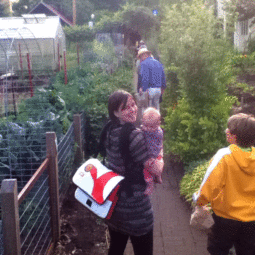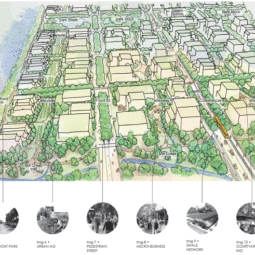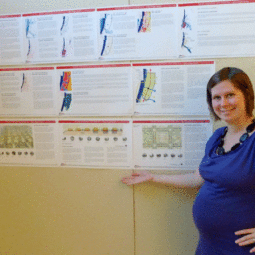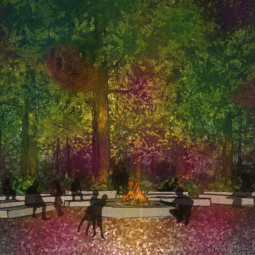The design site was an area just south of Oregon City along the Willamette River. We were charged with creating a day-use park on this narrow strip along the eastern side of the river. I choose to design a recreational and education park. People could come enjoy recreational activities – like kayaking, picnicking, hiking, etc – or they could come and learn something about the history of this lush landscape. They can also come enjoy both!
If you are an architecture/designer sort, you can click on this picture below to read about the goals and objectives in a bit more detail. Or you can just keep reading along and enjoy the shortened version.
 The history/educational bit focused on the Missoula Floods, which happened 15,000 years ago. It was a really amazing event that a lot of everyday people don’t really know much about. In a nutshell, a large ice dam up in Canada broke sending these rushing floods all the way down through Washington, Idaho and into Oregon which carved out the Columbia gorge and Willamette Valley in it’s wake. Pretty awesome, right?
The history/educational bit focused on the Missoula Floods, which happened 15,000 years ago. It was a really amazing event that a lot of everyday people don’t really know much about. In a nutshell, a large ice dam up in Canada broke sending these rushing floods all the way down through Washington, Idaho and into Oregon which carved out the Columbia gorge and Willamette Valley in it’s wake. Pretty awesome, right?
If you have ever driven through the Columbia Gorge, you may see these dark, huge boulders that seem to be oddly placed in the landscape. Many of these were actually boulders carried from miles away in the flood and deposited in the gorge. At our site location, there are these beautiful rock islands in the river and a basalt ridge on our site that seem to just pop right out of the ground. As the floods scoured away soil and rock, it couldn’t move this stronger rock material. So instead it remained, scraped away for us to admire.
The site used to be home to a lumber mill, so some decrepit mill structures are still on the site. I wanted to restore those for safety and incorporate them into the park as modern-day ruins. The one pictured above would be re-purposed as a wildlife viewing deck.
This is a diagram of the different views and interpretive kiosks that lead you through the park. The further in you go, the more experiential rewards you get. All in all, I received really good feedback from my reviewers and my professor for the studio. Amazing that after my second term I can make something like this.
Now you know what I have been doing though for the past ten weeks! At times, I was certainly longing to be puttering in my own garden or hand-feeding my urban chickens instead of hunched over my drafting table inside. But now I can look forward to a December of sleep, afternoons of tea and writing, and a little bit of peace.









 Upgrade your hanging basket game!
Upgrade your hanging basket game!  Here’s
Here’s

 This cluster was about the siz
This cluster was about the siz



 I start with a
I start with a


Way to go girl! (Love the dress)
Very, very cool. I love recycling the mill into a viewing deck!
Wow! Looks Great! But…how does the red hair fit in?